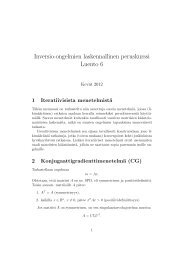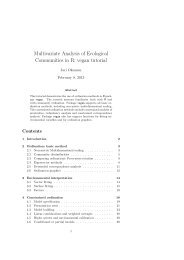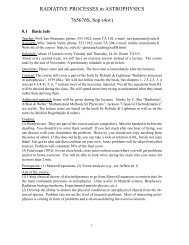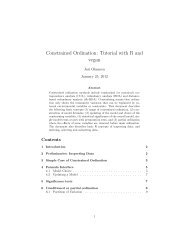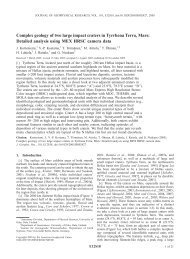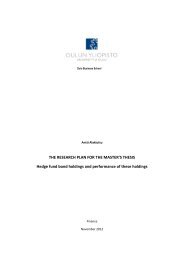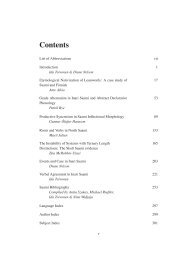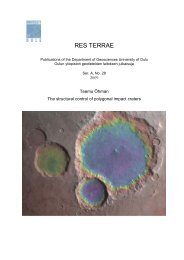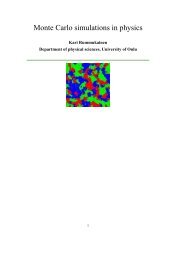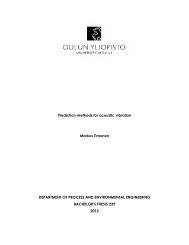Juha Köykkä - Oulu
Juha Köykkä - Oulu
Juha Köykkä - Oulu
- TAGS
- juha
- oulu
- cc.oulu.fi
You also want an ePaper? Increase the reach of your titles
YUMPU automatically turns print PDFs into web optimized ePapers that Google loves.
Res Terrae, Ser. A 32, J. <strong>Köykkä</strong>, Sedimentology of the Mesoproterozoic Telemark basin-fills, South Norway: implications for<br />
sedimentation processes, depositional environments and tectonic evolution<br />
for minimizing the grain-size effect. The advantage of the Dickinson-Gazzi technique<br />
is that sandstone maturity effects are minimized, and sandstones of different grain siz-<br />
es can be compared. From a modal point-count analysis, the percentages of various<br />
combinations of grains are plotted on ternary diagrams, which are based on quartz-<br />
feldspar-lithic fragment proportions that reflect different provenance terranes (Dickin-<br />
son and Suzek, 1978; Dickinson et al., 1985). These terranes are subdivided as fol-<br />
lows: (i) stable craton, (ii) basement uplift, (iii) magmatic arc, and (iv) recycled oroge-<br />
ny.<br />
Clastic petrofacies analysis was used in Paper II as supplementary data to identify<br />
the tectonic setting of the provenance area. A total of 500 grains were counted from<br />
each thin section by the method described above.<br />
4.5 Geochemistry<br />
Geochemistry and geochemical data were used to identifying the geochemical signa-<br />
tures of the (i) geological process, (ii) depositional basin tectonic evolution, and (iii)<br />
provenance of the sampled rocks. The main geochemical tools used in this thesis (Pa-<br />
pers II and IV) included an X-ray fluorescence spectrometer (XRF) and laser ablation<br />
with an inductively coupled plasma mass spectrometer (LA-ICP-MS).<br />
4.5.1 XRF analysis<br />
XRF analysis can be used as an analytical tool to determine the major and trace ele-<br />
ment geochemistry of rock samples. XRF analysis is based on the theory that a prima-<br />
ry X-ray beam excites secondary X-rays, which have wavelength characteristics of the<br />
elements present in the analyzed rock samples. The intensity of the secondary X-rays<br />
is used to determine the concentrations of the elements present by reference to calibra-<br />
tion standards, with appropriate corrections being made for instrumental errors and the<br />
effects the rock samples have on the X-ray emission intensities (matrix effects).<br />
The rock samples used in this thesis were crushed, milled and analyzed at the Uni-<br />
versity of <strong>Oulu</strong>, Institute of Electron Optics, using the Siemens SRS 303AS X-ray flu-<br />
orescence spectrometer with a cobalt tube and pressed powders. The loss of ignition<br />
was determined from the total weight of loss after ignition at 950 o C for 2 hours. The<br />
accuracy of the measurements was within



